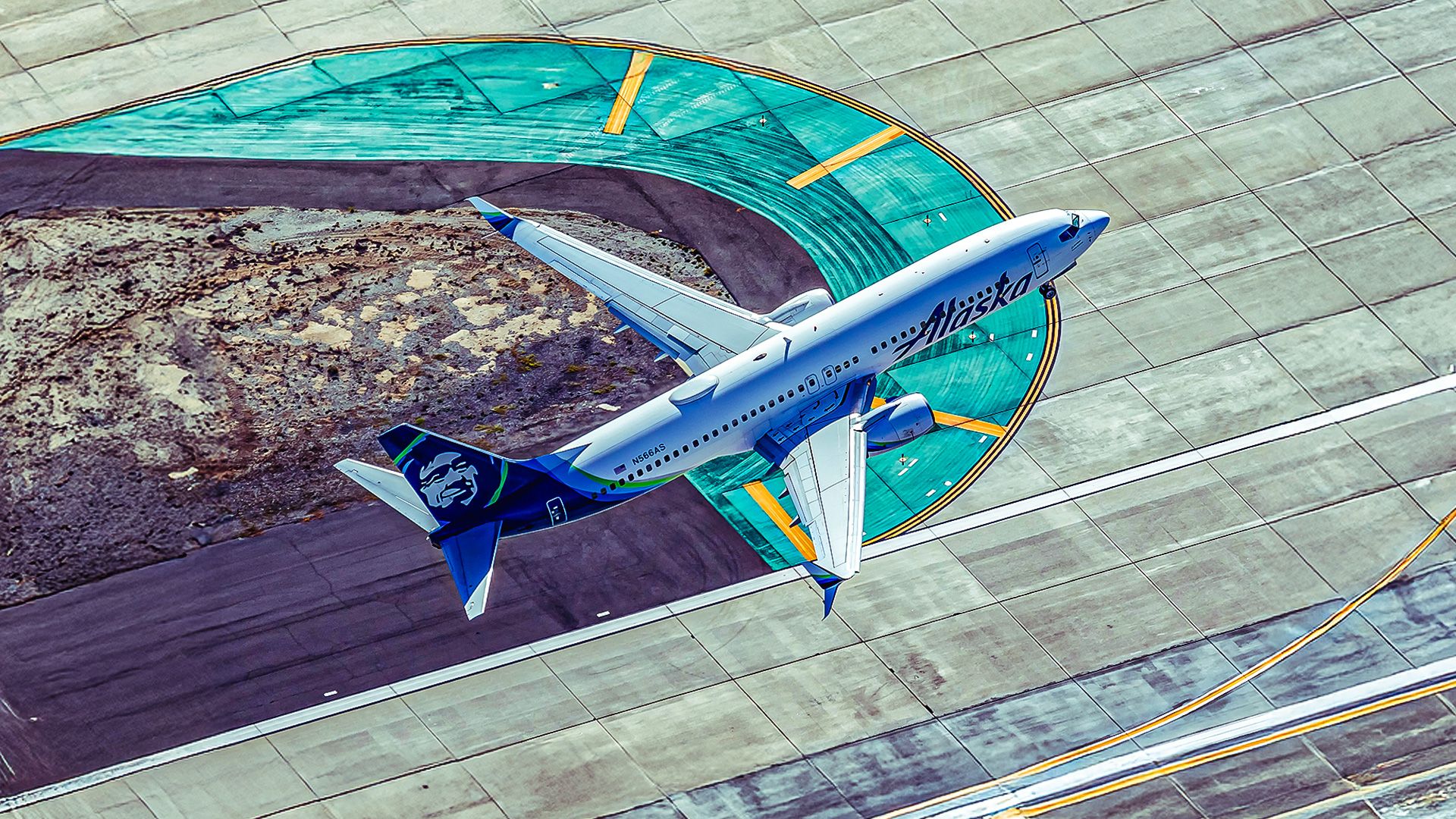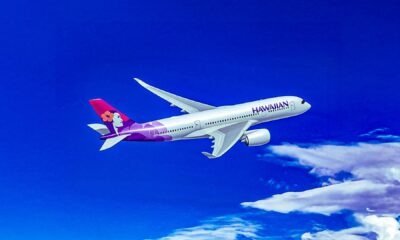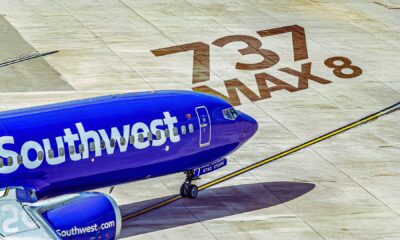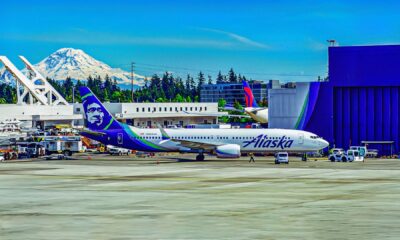World
Alaska Airlines Reports Strong Q3 Yet Lowers Profit Outlook

Alaska Air Group (NYSE: ALK), the parent company of Alaska Airlines, Hawaiian Airlines, and Horizon Air, reported a profitable third quarter for 2023, generating record revenues of approximately $3.8 billion and an adjusted earnings per share (EPS) of $1.05. Despite these positive figures, the company has revised its full-year outlook to at least $2.40 per share and projected fourth quarter EPS to be around $0.40, both of which fall significantly short of analyst expectations.
Management attributed these adjustments to rising fuel prices on the West Coast and increased recovery costs resulting from summer operational disruptions. Although unit revenues increased during the third quarter and are expected to remain positive in the fourth quarter, driven by reduced discounting and strong loyalty growth, non-fuel unit costs continue to remain elevated. An IT outage close to the earnings release further complicated matters, delaying the earnings call and contributing to a market reaction that saw shares decrease by around 4% during intraday trading.
Key Performance Indicators and Challenges
The adjusted earnings per share reported for the third quarter were $1.05, with operating revenues reaching a record range of $3.77 to $3.8 billion. Revenue per available seat mile (RASM) increased by 1.4% year-over-year. The revenue mix was favorable, as premium revenues rose by 5%, cargo revenues jumped by 27%, and loyalty cash remuneration increased by approximately 8%. However, non-fuel costs surged by around 8.6%, hitting the upper end of guidance and reflecting recovery expenses from the earlier IT outage as well as adverse weather conditions.
The airline’s average fuel price for the quarter stood at $2.51 per gallon, influenced by tight refining spreads on the West Coast. For the upcoming fourth quarter, Alaska Airlines anticipates low single-digit growth in RASM and costs, with an overall capacity growth of about 2-3% and earnings per share projected to exceed $0.40. The adjusted earnings for the full year are now expected to be at least $0.40.
Despite the setbacks, Ben Minicucci, CEO of Alaska Air Group, expressed optimism, stating, “Alaska’s profitable quarter was powered by another period of industry-leading unit revenue. I’m proud of our people for taking care of our guests, executing major integration milestones and capturing synergies ahead of plan as we bring together Alaska and Hawaiian Airlines.”
Future Implications for Alaska Airlines
The results from this quarter indicate that while Alaska Airlines’ commercial operations are performing well, the challenges of cost control are hindering the company’s potential. Management is emphasizing a dynamic pricing strategy driven by premium and loyalty growth, all while signaling discipline in capacity management. Nevertheless, the increase in cost expectations for 2025 and the impact of high fuel prices on profit margins raise concerns for investors.
The revised outlook suggests a resetting of expectations, which may limit the company’s path toward sustained profitability. Alaska Airlines needs to prioritize cost management, stabilize fuel prices, and ensure smooth operations to effectively convert revenue growth into earnings. On a positive note, the integration process following the merger appears to be progressing well, with enhancements to the loyalty program contributing to growth.
In the short term, the airline’s credibility will depend on its ability to deliver the anticipated third-quarter profits and implement effective cost-reduction measures. Additionally, it must work to avoid further disruptions from technology failures and adverse weather conditions.
The long-term growth narrative for Alaska Airlines remains compelling. The airline’s successful integration post-merger has positioned it to expand beyond its regional roots, with aspirations to enter the long-haul market. The ability to attract premium travelers and drive RASM growth on key routes, particularly long-haul flights with high-margin services, is crucial for future success.
Despite recent operational issues, the airline has demonstrated the capacity to meet core performance metrics, presenting a positive long-term outlook. However, the immediate challenges of operational discipline and cost management overshadow what was otherwise a strong quarter in terms of demand. As the airline navigates macroeconomic risks and cost pressures, its focus will need to remain on achieving profitability while maintaining its appeal to premium travelers.
-

 World3 months ago
World3 months agoScientists Unearth Ancient Antarctic Ice to Unlock Climate Secrets
-

 Entertainment3 months ago
Entertainment3 months agoTrump and McCormick to Announce $70 Billion Energy Investments
-

 Lifestyle3 months ago
Lifestyle3 months agoTransLink Launches Food Truck Program to Boost Revenue in Vancouver
-

 Science3 months ago
Science3 months agoFour Astronauts Return to Earth After International Space Station Mission
-

 Technology2 months ago
Technology2 months agoApple Notes Enhances Functionality with Markdown Support in macOS 26
-

 Top Stories2 weeks ago
Top Stories2 weeks agoUrgent Update: Fatal Crash on Highway 99 Claims Life of Pitt Meadows Man
-

 Sports3 months ago
Sports3 months agoSearch Underway for Missing Hunter Amid Hokkaido Bear Emergency
-

 Politics3 months ago
Politics3 months agoUkrainian Tennis Star Elina Svitolina Faces Death Threats Online
-

 Technology3 months ago
Technology3 months agoFrosthaven Launches Early Access on July 31, 2025
-

 Politics3 months ago
Politics3 months agoCarney Engages First Nations Leaders at Development Law Summit
-

 Entertainment3 months ago
Entertainment3 months agoCalgary Theatre Troupe Revives Magic at Winnipeg Fringe Festival
-

 Politics2 weeks ago
Politics2 weeks agoShutdown Reflects Democratic Struggles Amid Economic Concerns





















